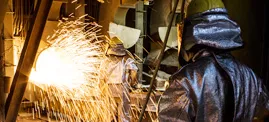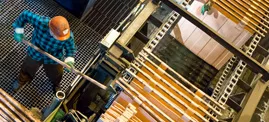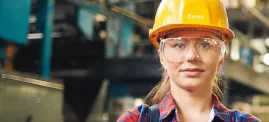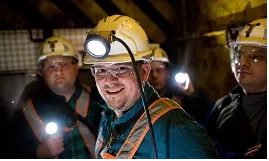
The Region of the so-called Old Belt despite limited production becomes one of the regions where considerable part of the mining staff gain experience and take part in construction of Polska Miedź. Here also, fully successful, reactivation of mines created favourable conditions to undertake geological search of copper ore deposits, on the full scale in the region of Lubin and Głogów, which was at those times a blank spot on geological maps. Apart from mining works, exploratory drillings were conducted around Złotoryja. The results of this research allowed expansion of such mine as 'Lena' and construction of the new 'Nowy Kościół' in the town of the same name. Mining was performed first in April 1955, and extracted ore was processed in the Enrichment Plant of Konrad mining site in Iwiny.
Over the period 1949 -54 the reactivation of mines: 'Lena', 'Konrad' and 'Nowy Kościół' in the so-called Old Copper Belt occurred
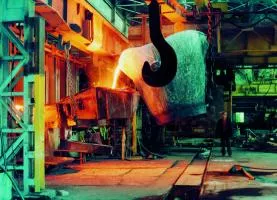
On 1953, first mechanical metallurgical plant buildings were operational and their construction started in 1951 -these were the beginnings of the steel industry in Lower Silesia. On 24 December 1953, the first casting of copper from the furnace reverberator was performed, which was the beginning of smelter operations. In 1954, more than 5 000 Mg of cathode copper were produced. In subsequent years, the program of the plant construction was implemented which in January 1959 influenced technological launch of particular facilities, and in July that year the smelter was commissioned.
1953-59 - Construction and mobilization of Huta Legnica, which was built for the purposes of ore processing of Old Copper Belt mines

Initially, drilling program prepared by Jan Wyżykowski gained many negative opinions. The main argument which was not in favour of works was the claim that German geologists' works did not confirm deposits around the area. Government Resolution helped Jan Wyżykowski in his goal, the Resolution appointed Polish Geological Institute to discover deposits of copper to support national economy. As a result, drillings were continued and their consequence was discovery of the first Lubin-Sieroszowice deposit on 23 March 1957.
23rd March 1957 - Jan Wyżykowski discovered main deposits of ore with the content of 1.40% of copper at the depth of 655-658 m
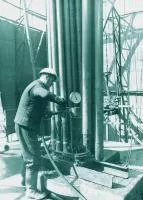
The basic problem for builders of the Copper Belt was related to the sinking of shafts. Up to 1960 shaft works under such difficult conditions of strongly hydrated rock mass were not conducted in Poland. Availability of copper ores deposit required freezing of the rock mass, which at those times was extremely difficult. Construction of shafts, from the perspective of LGOM mining undertakings includes a number of developmental stages. The first falls on the years 1960-70 and includes construction of 'Lubin' and 'Polkowice' mining shafts. Experiences gained during sinking of these two shafts allowed construction of monitoring apparatus for the freezing process and unfreezing of the freezing mantle which was beneficial during construction of other shafts.
1960-70 - Establishment of 'Lubin' and 'Polkowice' mining plants
Management of Legnica-Głogów Copper Belt involves establishment in 1960 in Lubin state-owned company under the name the Zakłady Górnicze 'Lubin w budowie'('Lubin under construction' Mining Plants). These plants were transformed on 1 May 1961 into Kombinat Górniczo-Hutniczy Miedzi in Lubin, whose task was to construct mines, ore enrichment plants, copper smelter and construction of auxiliary and social facilities.
1st May 1961 - The official establishment of KGHM (shortened from Kombinat Górniczo-Hutniczy - Polska Miedź)
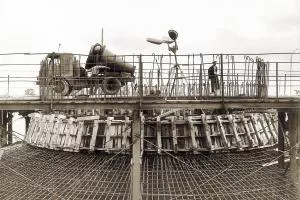
1968-78 - Construction of smelter in Głogów - Głogów I and Głogów II with flash furnace
Works under the first production building started on 4 March 1968 and in 1969 the decision to expand 'Głogów' Copper Smelter to the production capacity at the level of 160 000 Mg of electrolytic copper annually was made. On 4 June 1971, test anodic furnace casting was conducted while on 17 July 1971 'Głogów' HM was commissioned. On 11 April 1974 construction of the second part of 'Głogów II' started which was based on single-stage blister copper smelting in the flash furnace. 'Głogów II' Copper Smelter was established in January 1978.
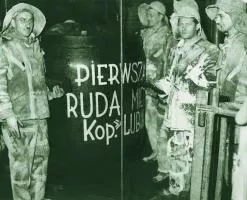
15.02.1968 - Manufacturing of the first concentrate by Zakład Mechanicznej Przeróbki Rudy ZG 'Lubin' (Ore Processing Plant ZG 'Lubin')
On 15 February 1968, ZMP (today ZWR), which belong to Lubin mine, produced the first concentrate and on 8 May that year processed 100 000 tonnes of copper ores, and on 11 May produced 1000 tonnes of metal in concentrate.
Construction of smelter in Głogów and manufacturing of the first concentrate
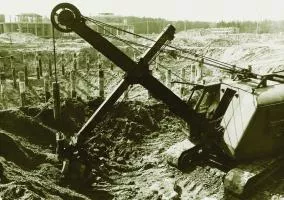
Construction project of 'Rudna' mine initially, assumed target mining capacity at the level of 7.5 million Mg of ore annually. In order to construct 'Rudna' ZG mine knowledge and experience gained during construction of previous shafts were used, which resulted in the shortest period of production capacity. 'Rudna' is the largest LGOM mine with preferably the best designed mining structure which is suitable for deposit conditions and adequately technically equipped, which enables to obtain the highest mining capacity. In July 1974 'Rudna' Mining Plants obtained 25% of designed mining capacity, which was the basis for transformation of these Mining Plants into mining units. In the same year technical-economic expansion assumptions were prepared with target mining capacity at the level of 12 million Mg of ore annually.
1969-74 - Construction of 'Rudna' mine - the biggest KGHM mine
Copper industry definitely and favourably performed the restructuring process and adapted to the conditions of the market economy. In place of the previous Kombinat Górniczo-Hutniczy-Polska Miedź in September 1991 one-person Company of State Treasury - KGHM Polska Miedź S.A and the Company's authorities - Management Board and Supervisory Board were established. It implies privatisation, as well as preparation for independent sales transactions. Launching an office in London.
Restructuring of KGHM
To launch Precious Metals Plant and processing of anodic sludges according to Swedish technology was one of the most important technological achievements of 'Głogów' HM. The decision on construction of the Plant was made in 1990 and in 1993 technological start-up was conducted. Full operation began in February 1994. The Plant produces refined silver, gold, platinum-palladium sludge and selenium.
Construction and launch of Precious Metals Plant
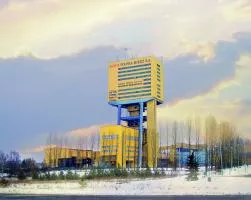
'Polkowice-Sieroszowice' Mining Plant is a branch which includes two former mines: 'Polkowice' and 'Sieroszowice'. Up to 1995 these mines formed separated branches of KGHM Polska Miedź S.A On 1 January 1996 under restructuring activities their merger took place. These transformations improved management, rationalization of resources management, use of the production capacity of Ore Enrichment Plants as well as allowed the effective implementation of thin deposit mining and reasonably conduct the investment works.
Merger of 'Polkowice' ZG and 'Sieroszowice' under one mining branch
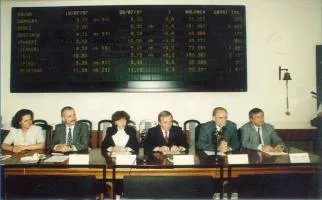
In June 1997 public offer of KGHM Polska Miedź S.A shares was conducted, under which the State Treasury sold 32. 8% (65 732 200) of the Company's shares.
Individual investors purchased shares at the price of PLN 19 and under the tranche for institutional investors shares were sold for PLN 21.
30 000 000 shares (15%) were free of charge for the Company's employees with 2 year-long sales freeze.
10.07.1997 - Privatization and quotation of KGHM on stock exchange in Warsaw and London
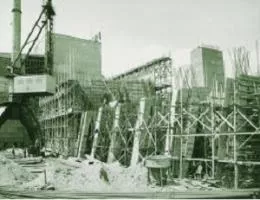
ZWR as a separated KGHM Branch was established on 1 November 1998. As a result of the ZWRs connection which constituted an integral part of 'Lubin', 'Polkowice-Sieroszowice' and 'Rudna' Mining Plants Under the Branch the following Regions were separated: Lubin, Polkowice and Rudna with the task to conduct ore enrichment, complex construction and installation works related to extension, modernization and operation of the Branch. The beginnings of the Branch date back to 1967/1968 when construction of the first Ore Enrichment Plants near 'Lubin' and 'Polkowice' mines started. In February 1968 the first copper concentrate from Lubin ZWR was obtained. The production of concentrate by Polkowice ZWR started in December 1969.
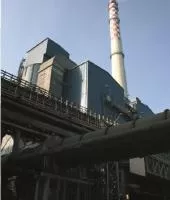
1990s and the first decade of the 21st century is the period of pro-ecological investments. Start-up of the flue gases desulphurization plant in the Głogów Copper Smelter, gases desulphurization plant SOLINOX in the Legnica Copper Smelter and installation of new anode furnaces for protection of the atmosphere, allowed to decrease the sulfur dioxide emission considerably.
1.11.1998 - Separation and establishment of the Branch of Ore Enrichment Plant.
Startup of the first desulphurization plant in “Głogów I”.
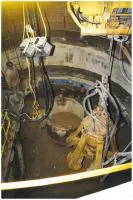
Regarding complex geological and mining conditions as well as the scope and diversity of works, this is one of the most complicated undertakings. Costs of this investment was estimated to reach more than 80 mln dollars.
07.04. 2000 - commencement of R-XI shaft sinking, the deepest owned by Polska Miedź, with the target depth of 1250 m.
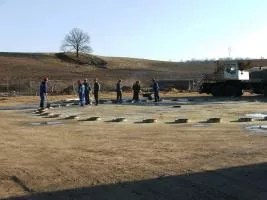
foto. PeBeKa
The SW-4 shaft is necessary to start exploitation of deposits of copper ore in the area called Głogów Głęboki Przemysłowy (Deep Industrial Głogów). It was planned as an air conditioning shaft, 1260 m deep, which will allow to use maximum performance of the main fans station in the Polkowice-Sieroszowice mine.
Commencement of the SW 4 shaft construction
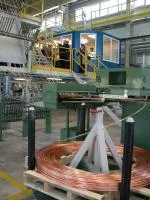
At the end of 2006, within the scope of expanding the assortment of products and meeting the customers’ expectations, a new line for production of wire from oxygen-free copper, 8 mm in diameter, with the Upcast technology, was started up in the Cedynia Copper Smelter. Therefore, the manufacturing performance increased by 15 thousand tons per year. The Upcast process assumes production of high-quality wire characterized with even structure in its cross-section.
17.10.2006 - opening of a new technological line UPCAST, for production of wires from oxygen-free coper - “Cedynia” Copper Smelter
Global Depository Receipts (GDR) were listed on the London Stock Exchange (LSE) since July 1997. On 22 Decemebr 2009, upon the company’s request, the GDRs were removed from the list of securities admitted to trading in LSE, and the GDR program in the KGHM Polska Miedź S.A. Was terminated.
22.12.2009- end of listing the Global Depositary Receipts in London
The Company under the name KGHM Ajax Mining Incorporated is supposed to implement the mining project of copper ores and gold exploitation from Afton - Ajax deposit in Canada.
04.05.2010 - KGHM Polska Miedź together with the Canadian partner Abacus Mining & Exploration Corporation created the joint venture company with the majority share of KGHM
This year was rich in jubilee events. During the jubilee session the last fifty years of the company were summed up and discussions about prospects were held. State awards and honorary badges were awarded. On the occasion of the jubilee, KGHM issued a special CD with Polish hits of the last 50 years.
13.05.2011 - Jubilee year. On the occasion of 50-anniversary of KGHM Polska Miedź S.A In Lunin, the Jubilee Session was held under the banner of 'Polska Miedź cenniejsza niż złoto' ('Polish Copper more valuable than gold')
One of the key events in the history of KGHM Polska Miedź S.A. in the area of resource base development the Canadian company Quadra FNX Mining Ltd was friendly acquired. (today KGHM INTERNATIONAL LTD), with its registered office in Vancouver. KGHM purchased 100% of company's shares quoted on the stock exchange in Toronto. This transaction was at that moment the largest foreign investment in the history of Poland
05.03.2012 - The acquisition of the Canadian mining company: Quadra FNX

On 19 March 2013 IN Mining Plant in Rudna, in section G-3 of Main Rudna mine, at a depth of 960 meters there was a quakes of a rock mass. A quake as 1,6 x108J. It was one of the strongest shocks in the Polska Miedź. There were 19 employees trapped underground, there was no contact with them. For more than seven hours, five teams of Mining and Metallurgical Rescue Unit tried to get into the cut off miners. Rescuers managed to reach miners from the mine Polkowice - Sieroszowice. No employee suffered serious injuries then.
The rescue operation in Mining Plant in Rudna , during which 19 miners were rescued.
The Sierra Gorda mine, one of the largest and the most rapidly developing projects in the world, was officially opened. The opening ceremony was attended by many personalities, including the president of Chile: Michelle Bachelet.
At the opening the mine was named after Ignacy Domeyko. He was the Polish geologist who most of his life spent in Chile and contributed to the development of the country from both an industrial and socio-cultural perspective.
The processing of copper ore in the Sierra Gorda processing plant started in July 2014. The first transport with ca. 6,000 tonnes of concentrate left the mine in November of this year.
01.10.2014 - The formal opening of the Sierra Gorda mine
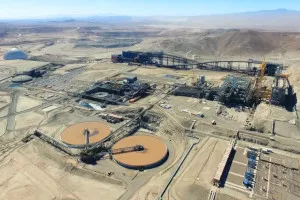
All major expenditure needed to launch commercial production of copper concentrate had been incurred, and the facility was fully handed over to the operations personnel.
Concurrently, the molybdenum processing plant produced concentrate with at least 40% molybdenum content.
KGHM begins commercial production of copper and molybdenum concentrate in Sierra Gorda.
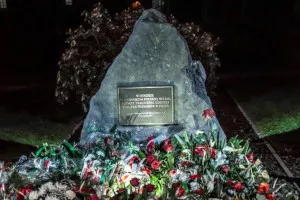
8 miners died and 21 were injured on 29 November 2016 at the Rudna Mining Facility following a spontaneous rockburst. It was the largest mining disaster in the history of KGHM.
A year later, a plaque was unveiled in front of the Company's Head Office in Lubin to commemorate all victims of accidents at work at KGHM. The plaque was set in a boulder recovered directly from the place of the accident. The eight rocks surrounding the boulder stand for the eight victims.
Each year on the 29th of November, the Company’s Management Board, the KGHM Group’s employees and inhabitants of the Copper Basin gather here to pay tribute to the victims of accidents at KGHM and commemorate those who perished.
Tragic accident at "Rudna" mine
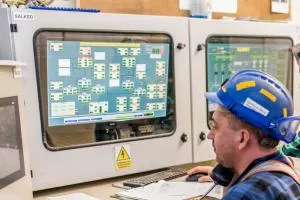
One Control Room, a state-of-the-art dispatch station, was placed in service at the Polkowice-Sieroszowice mine. All dispatch personnel (mining, electric and automation) were brought together to work from a single place.
The key purpose of One Control Room is to coordinate internal communication at the mine to ensure that the decisions made are optimised from the point of view of production and the safety of employees.
The conceptual work of the new control room began in 2012. It constitutes an element of a safe mine.
Launching a state-of-the-art dispatch station One Control Room in Polkowice-Sieroszowice mine

The updated KGHM Polska Miedź Strategy approved in December 2018 is a comprehensive and long-term analysis accounting for the changing macroeconomic environment and geopolitical situation, which have a significant impact on the mining industry.
The Strategy provides for four key development directions of the KGHM Group: flexibility, efficiency, ecology and e-industry.
Update of KGHM Polska Miedź Strategy for 2019–2023
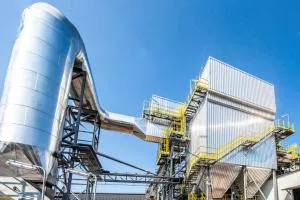
The Company commissioned Poland’s only rotary-casting-refining furnace for recycling copper production.
As the new unit can take over the function of the remaining furnaces, during their overhaul shutdowns the smelter’s production will remain stable at a high level. This will enable the Company to enhance efficiency and boost copper production.
Launch of rotary-casting-refining furnace at Legnica Copper Smelter
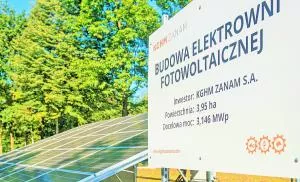
The photovoltaic power plant built by KGHM ZANAM is the first fully computerised and automated power plant in Poland operating in 4.0 technology.
- According to our strategy, we want to cover half of our energy needs from our own sources, including RES, by 2030. In the mining and smelting industry this is an extremely ambitious goal. We are not wasting time and are developing photovoltaic projects. The green megawatts of the KGHM ZANAM power plant are already flowing - Marcin Chludziński, President of the Management Board of KGHM Polska Miedź S.A.
The first photovoltaic power plant in 4.0 technology has been launched in Poland
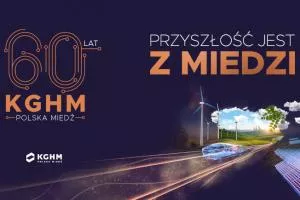
"Explorer, Giant, Visionary" and the "Future is made of copper" - these were the jubilee slogans for the 60th anniversary of the KGHM establishment held in 2021. Apart from the gala ceremony, the company organised plenty of events commemorating the rich history of the copper giant and referring to the future based on copper - a resource of key importance for the economy based on the new technologies and electromobility.
The 60th anniversary of KGHM was the occasion to paint the dedicated murals in Legnica and Warsaw, organise the "Copper Valley" software hackathons and Copper Jam with copper-games and a premiere of a commemorative film about KGHM. In addition, the "Travels with Copper" mobile exhibition set out its journey around Poland. A special concert with the participation of music stars was organised for the company's employees.
"Explorer, Giant, Visionary" and the "Future is made of copper" - these were the jubilee slogans for the 60th anniversary of the KGHM establishment held in 2021.

KGHM has signed an agreement with U.S.-based NuScale Power to deploy small modular reactors (SMRs) to meet its own energy needs and reduce greenhouse gas emissions.
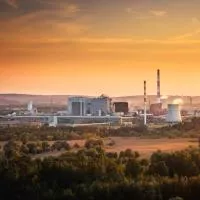
The Legnica Copper Smelter and The Głogów Copper Smelter have received a positive audit result under the Copper Mark certification. KGHM thus maintained its position among the 28 companies from around the world awarded the responsible manufacturing mark.
Start of atomic (SMR) work at KGHM and confirmation of Copper Mark for two KGHM smelters.

The GG-1 shaft is a strategic investment by KGHM. It will provide the air that will enable us to exploit the Deep Głogów deposit at depths that were previously inaccessible to KGHM. In June, the key connection between the shaft and the Rudna Mine was made.
At 1,348 meters is the deepest mining pit in Poland - KGHM Polska Miedź's GG-1 shaft in Kwielice is one of the most important investments in the copper giant's history and the largest underground project in the non-ferrous metals industry in Europe.
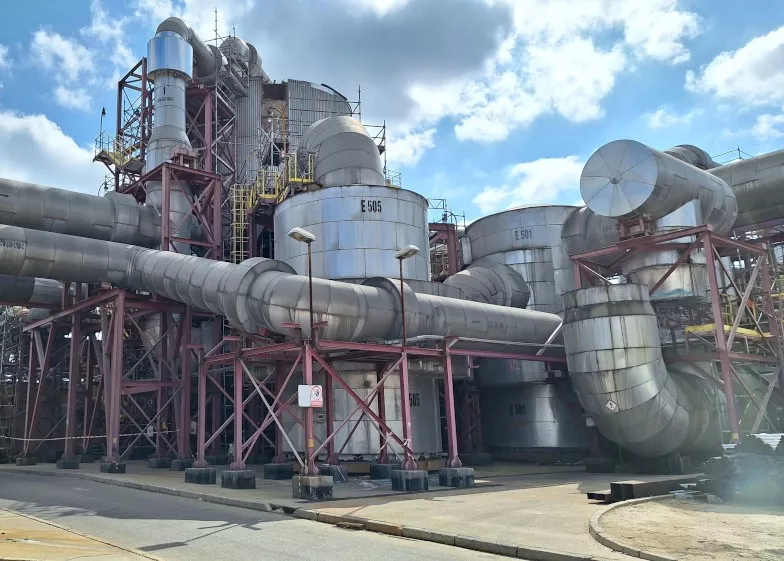
As part of the overhaul shutdown, the Głogów Copper Smelter and Refinery carried out a number of investment tasks that increased the plant's efficiency. Control systems were updated, the slurry furnace oil firing system was upgraded and the sulphuric acid plant was optimised.
This was the second major overhaul at the Głogów I Copper Smelter and Refinery following the 2016 upgrade.
The work performed during the overhaul shutdown will contribute to the optimisation of production processes and the further development of technology at this division of KGHM.
Completion of overhaul at the Głogów Copper Smelter and Refinery

